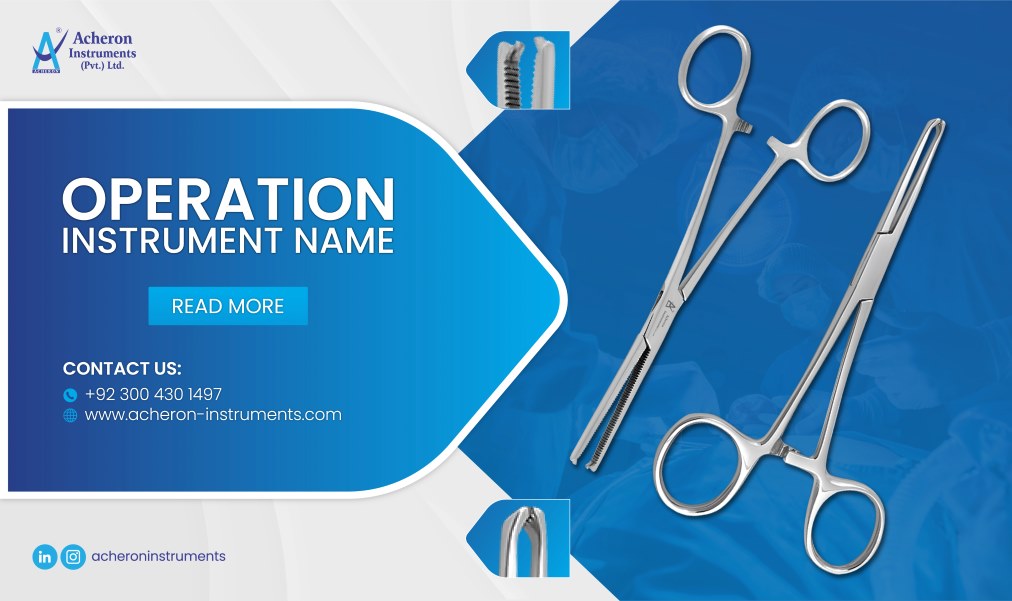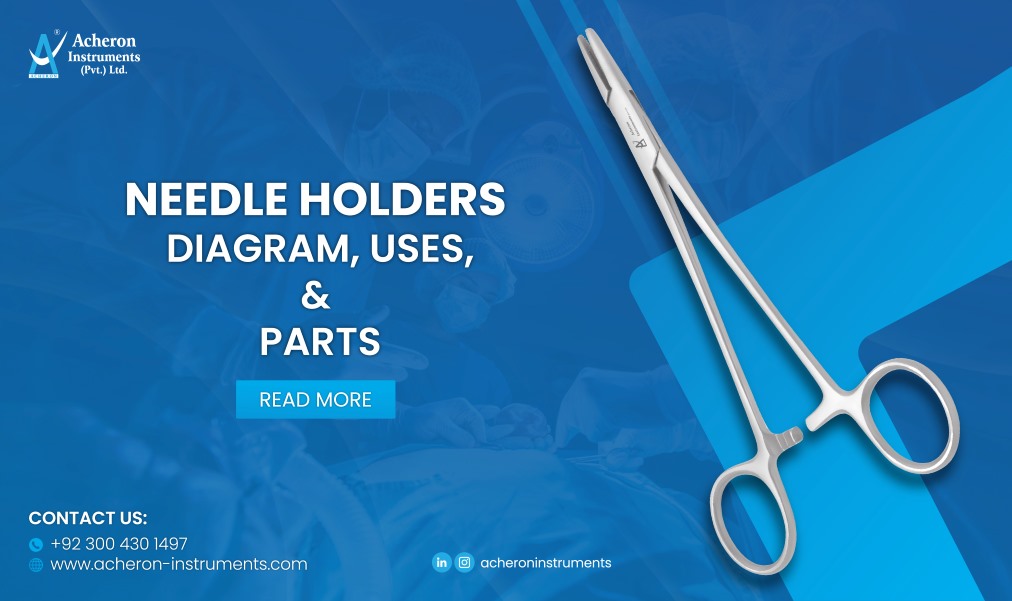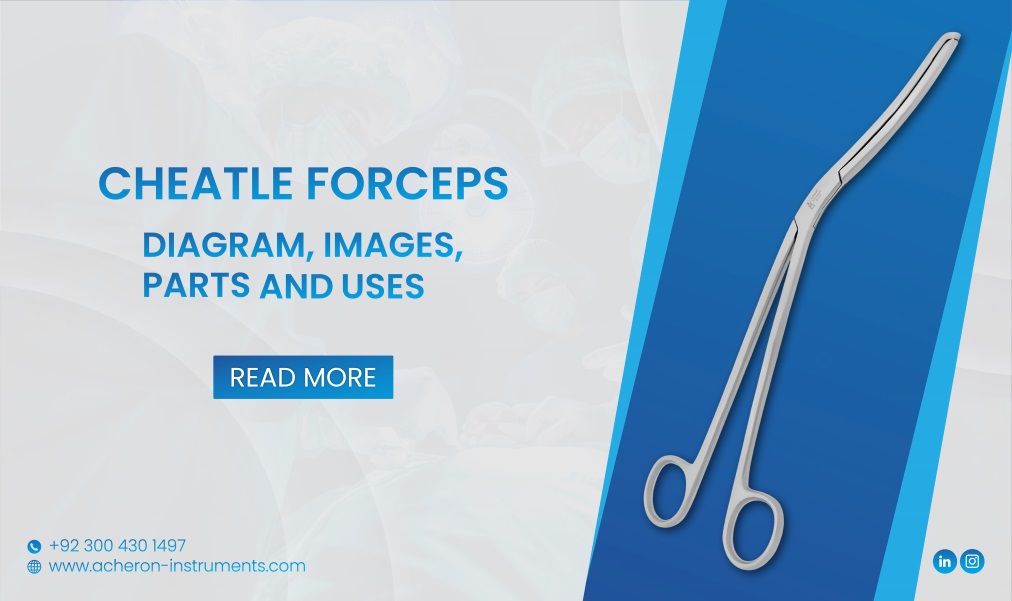Want to learn about Sterilization methods of surgical instruments? Surgical procedures that demand intricate care for the patient? A single mistake or negligence can be life-threatening so it’s important that you must be very cautious while performing surgeries. Surgical instruments are the realm of any surgical procedure. Whether you are a healthcare professional who is aimed at contributing to the best surgical outcomes or want to maintain a sterile environment in your healthcare facility, you need to take proper care of your surgical instruments. For that purpose, the first and foremost thing is to sterilize your surgical tools properly before starting any surgical procedure. Moreover, there are multiple sterilization methods for surgical instruments that you can consider that we are going to discuss in this blog.
.webp)
But first, let us give you some reasons why sterilization of surgical instruments is necessary.
- It is essential to prevent surgical site infections (SSIs) by eradicating microorganisms that may be present on surgical instruments.
- The process of sterilization plays a crucial role in achieving this goal by minimizing the risk of postoperative complications. Thereby, ensuring a safe surgical environment.
- It helps prevent cross-contamination, where microorganisms from one patient can be transferred to another through improperly sterilized instruments.
- It contributes to optimal surgical outcomes as it minimizes the interference of infections during the postoperative period.
- Proper sterilization not only protects patients but also ensures the functionality and longevity of surgical instruments.
Different methods of sterilization
Prior to sterilization, it is essential to pass surgical instruments through the preliminary stages of disinfection and cleaning. The whole process includes cleaning, rinsing, and drying of the surgical tools that are essential for the success of the sterilization procedure. In this blog, we will delve into the various sterilization methods employed in healthcare settings to ensure the utmost safety and well-being of patients.
Steam Sterilization (Autoclaving):
Steam sterilization, also known as autoclaving, is one of the most appropriate, well-suited, and effective methods in healthcare facilities. Autoclaves (machines used for autoclaving procedures) use high-pressure steam to kill viruses, bacteria, and spores on surgical tools. Moreover, the process relies on the principle that moist heat penetrates materials more effectively than dry heat.
In the autoclaving procedure, the instruments are put in a chamber and subjected to high-pressure steam at temperatures typically ranging from 121 to 134 degrees Celsius. Furthermore, the exposure duration depends on the material and nature of the instruments. Also, Autoclaving is a highly effective method against a vast range of microorganisms and is suitable for heat-resistant materials such as high-grade stainless steel.
Ethylene Oxide (ETO) Sterilization:
There are certain plastics and electronic components, that are heat sensitive in nature. ethylene oxide (ETO) sterilization is a preferable method for such instruments. ETO is a gas that kills microorganisms effectively by disrupting their cellular functions. However, this method is especially useful for tools that cannot withstand the high temperatures of autoclaving.
In the ETO sterilization process, the instruments are placed in a sealed chamber and exposed to a controlled mixture of ethylene oxide and other gases. However, this procedure requires special care and handling due to its potential hazards related to gases.
Hydrogen Peroxide Gas Plasma Sterilization:
Hydrogen peroxide gas plasma sterilization is another method that is useful for heat-sensitive instruments. It employs low-temperature hydrogen peroxide gas plasma to kill microorganisms on the instruments' surfaces. However, this one is an environment-friendly method that is considered faster than ETO sterilization.
In this procedure, a hydrogen peroxide solution is vaporized into a plasma state in a chamber and then instruments are put into that chamber. Also, the plasma penetrates the surface of the instruments which is rich in free radicals that makes the sterilization procedure effective. Also, busy healthcare facilities prefer this practical sterilization method because the cycle time for hydrogen peroxide gas plasma sterilization is relatively short.
Dry Heat Sterilization:
This sterilization method involves exposing instruments to high temperatures without moisture. This method is not as common as autoclaving, however, it is suitable for tools that may be damaged by moisture. Dry heat sterilization typically operates at temperatures between 160 and 180 degrees Celsius for a duration sufficient for ensuring the destruction of microorganisms.
This method is a good choice for heat-stable materials and is frequently used for instruments like metal forceps and glassware. However, it may not be suitable for all types of surgical tools. Also, the longer exposure times required can be a limitation in busy healthcare settings.
Chemical Sterilization:
Chemical sterilization involves the use of liquid chemicals to eliminate microorganisms on surgical tools. This method is not as common as other methods, and it is useful for specific applications. Moreover, it is especially useful in situations where heat or gas sterilization is not practical.
One frequent chemical sterilization method is the use of high-level disinfectants, such as peracetic or glutaraldehyde acid. These solutions require careful handling due to their potential toxicity but are highly effective against a broad spectrum of microorganisms. Moreover, this method is generally preferable for endoscopes and other delicate instruments that cannot withstand the rigors of autoclaving.
Glass bead sterilization
This Sterilization methods of surgical instruments serves as a supplementary heat sterilization technique that is primarily useful for the rapid treatment of instrument tips or solid metal components. For microsurgery and dental equipment, infrared sterilization is generally the preferable method. This process exposes the instruments to brief yet intense infrared thermal radiation for the purpose of sterilization.
Important points for sterilization
- If you intend to sterilize the instruments with a complete destruction of microorganisms, autoclaving is the most preferable method.
- Avoid using solutions containing benzyl ammonium chloride for instruments equipped with tungsten carbide inserts such as needle holders, scissors, and tissue forceps. This is because it can lead to the deterioration of the tungsten carbide inserts.
- Do not forget to thoroughly pre-clean instruments to remove visible debris before the sterilization process. This step is essential for effective sterilization.
- Do not overload sterilization trays or chambers to allow adequate steam or gas penetration, ensuring that all instruments receive proper sterilization.
- Wear appropriate PPE (Personal Protective Equipment), including masks and gloves, when handling instruments before and after sterilization to prevent contamination.
Conclusion
Sterilization of surgical instruments plays a vital role in ensuring patient safety. From the widely adopted autoclaving to specialized methods such as hydrogen peroxide gas plasma sterilization, each technique has its merits and limitations. You must consider them before you choose the specific sterilization method. Moreover, properly sterilized surgical instruments will not only enhance the longevity of these tools but will also avoid repairs or replacements every now or then.
If you are looking for high-quality surgical instruments at reasonable rates, you need to visit our website now. Acheron Instrument offers high-grade German stainless steel forged medical equipment at the best rates for your healthcare facilities. Also, we have an extensive range of ISO-certified surgical instruments ranging from scissors to surgical forceps and surgical retractors, etc. Contact us for further assistance.








